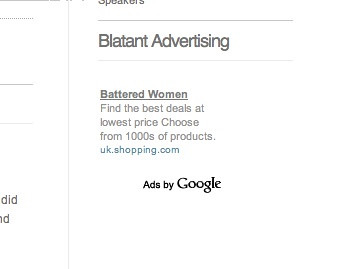As one of the founders of DataPortability that plays an active role in driving the project, I am writing this post to give recognition to some key individuals as well as transparency in line with the DataPortability philosophy. I also want to promote the fact that the social experiment that is DataPortability, something that both Chris Saad and myself actively are trying to build, has had a massive evolution and validation that it works. The example set by this team on the first major deliverable external to the Project, is a model to how things will occur in the future
In February, RedHat sent a cease and desist letter to the Project, that we must drop our logo as it infringes on their copyright. Whilst the threat could have been debated, the decision was made after community consultation that it was not worth a fight, and we sould pick a new logo. However, what was different was how we were going to pick a new logo: we decided to reach out to the broader community on this one.
So a competition was launched , that soon followed with some generous prizes, for who could design the best logo. Over the course of those next few weeks, we received 403 entries that vied for the prize .
Now what?
DataPortability is a completely decentralised, non-hierarchical movement. Chris calls it participant democracy, where I prefer the simpler wikiocracy term. There is not formal management structure, and everyone is considered equal. No one is forced to do anything, but everyone involved in enthusiastic to make our vision a reality. So how do you convert those 403 submissions into a list of 15 logos that the public can easily vote for, with the pressure that the whole industry is looking and everything must be done with complete accountability? Add to the fact people involved in DataPortability all have full time jobs, and other commitments – turning around something like this in a few short weeks is not easy.
Mary Trigiani (a founding member of San Francisco based Foldier) took the initiative, and formed a group to spearhead this mammoth task. She was joined by Phil Wolff (editor of Skype Journal , and from San Francisco), Brady Brim-DeForest (a Director and entrepreneur from Los Angeles), Navarr Barnier (a 17 year old Texan high school student on the W3C HTML committee), Triona Carey (a technical writer from sunny UK) and myself – where the team started assembling themselves. Remember, we have no authority formalised in the Project, and with such a mammoth task, the ability to self-organise and get things done should not be underestimated. Both Triona and Mary who initially led the team, lived in completely different time zones – it’s not an easy thing to make even simple decisions with such a factor, making the team completely virtual.
What followed was an amazing team effort that did the following:
- Discovered a technical issue where everyone seemed to be getting a different count, and therefore, not necessarily seeing all the logos submitted on the Flickr pool. This created a big problem: how do we ensure all our judges give equal consideration to all logos? Sure – you can download the logos and wack them on another server…you try doing that for 400 separate images in a semi-closed application
- Coordinate to get all these well recognised judges onto the same page, to vote their favourites, and thereby create a shortlist of logos.
- Reduce that shortlist of entries to a maximum of 15 (of 55 as picked by the judges), with all logos investigated for potential trademark issues and other factors that bore consideration on an appropriate logo
- Battle with timezones, evolving decision making processes, constantly changing leadership and commitments due to personal circumstances, and the dozens of hiccups along the way
- …as well as numerous other logistical issues which are still occurring and I don’t need to bore you with now
The technical issue, which we experimented with God knows how many options eventually had Phil download all the files with a special utility , and Navarr created an application that could allow all the logos to be seen and voted on (with some initial help from Bob Ngu ). Phil also organised a logo collaboration space generously donated by conceptshare, that allowed the judges to get into discussions on logos to raise issues and generate awareness of potential problems with certain logos – a massive process given how many logos the judges had to review. These judges then placed their votes on Navarr’s application, which then had to be scrutinised quite intensely by members of the team to cut down the combined judges short list as well as research any potential trademark issues. And the people at webreakstuff rushed to build a system to enable the public voting at http://dataportability.techcrunch.com
The end result are 15 logos that have gone through a very thorough process of review that had them considered against every other logo.
Whilst I hesitate writing posts like this on my blog (I like to keep this blog primarily about analysis rather than events), I want to record this as evidence that its requires key individuals whose names are not known outside of the project to get things done – so thank you to everyone mentioned above. Combined I don’t think its unfair to say the team spent 100 hours working together, and this was done in their free time – they are all busy people like the rest of us.
I also want to thank our brilliant judges, who gave very considerate review over the logos and great insight as to what would make an effective logo.
They are:
- Malthe Sigurdsson , Brand director at Skype
- Fred Oliveira , Webreakstuff.com
- Tom Coates , Yahoo
- Ashley Hall , Yahoo
- Fiona McDougall , OneWorld Communications
- Michael Pick , Smashcut Media
and I cannot praise these individuals more highly after interacting with some of them and seeing their judging which showed they obviously put a lot of consideration into their shortlist (and well as showing clear talent)
So check out the logos and don’t forget to vote (thanks to Techcrunch) ! DataPortability is a community effort for a new future – your small contribution by voting, together with everyone else, helps us get one step closer to that vision.








